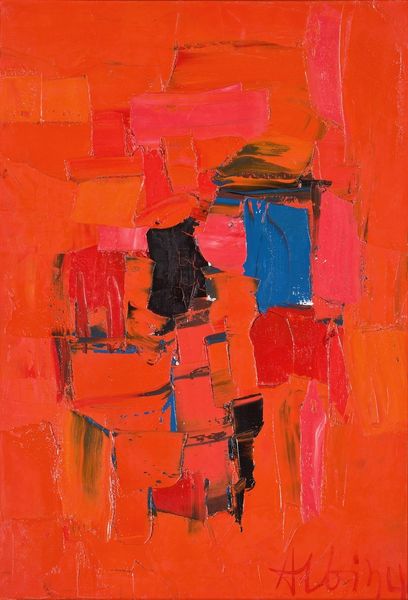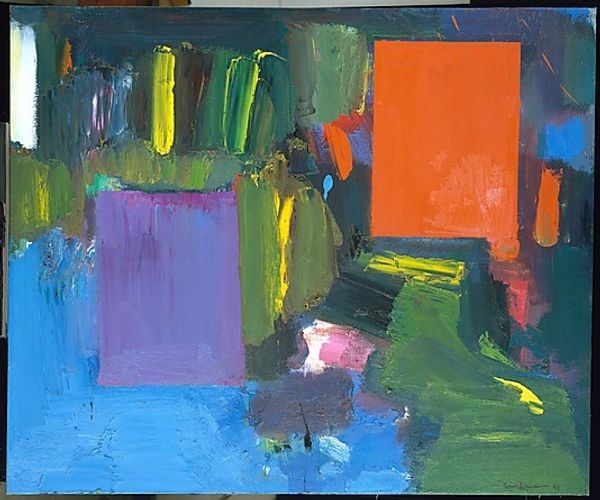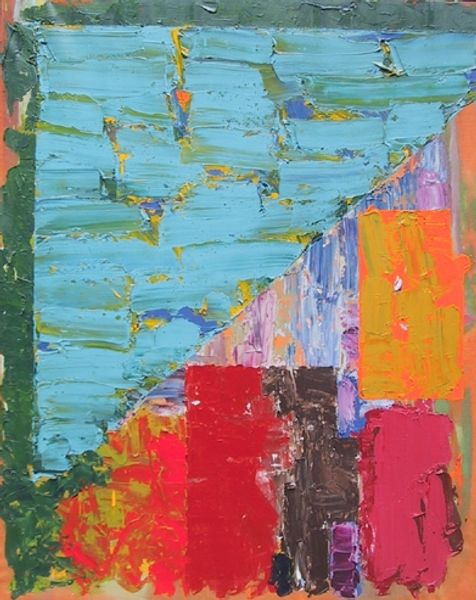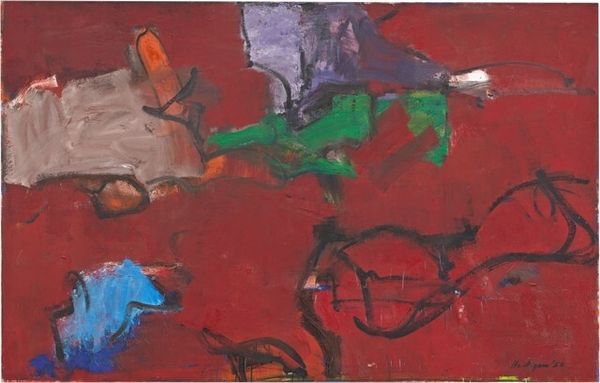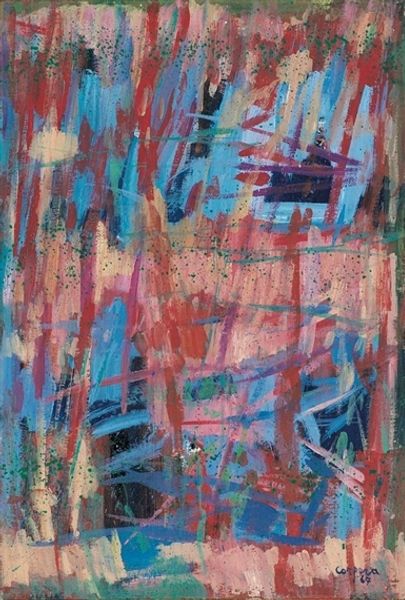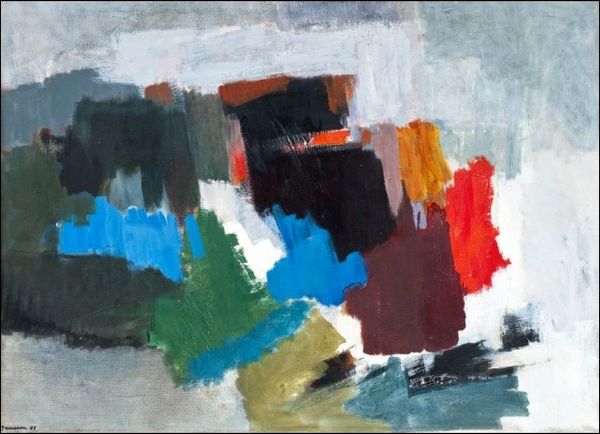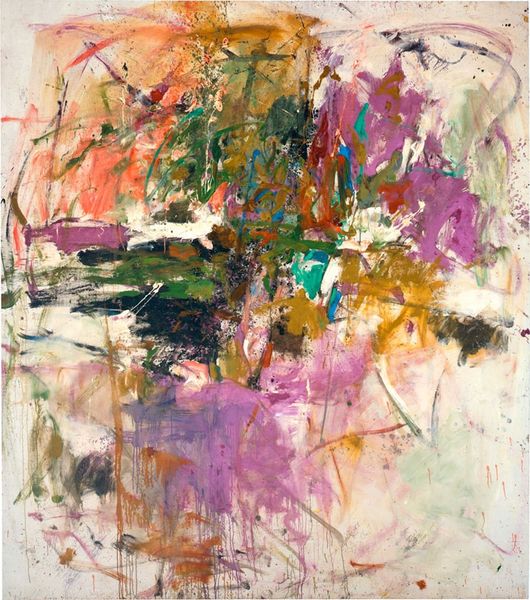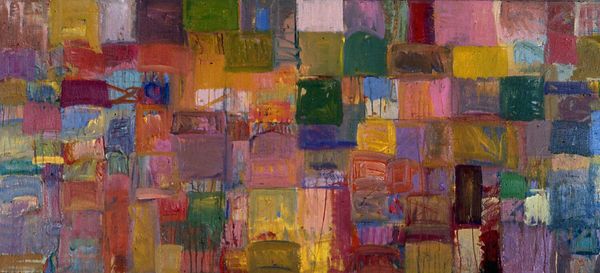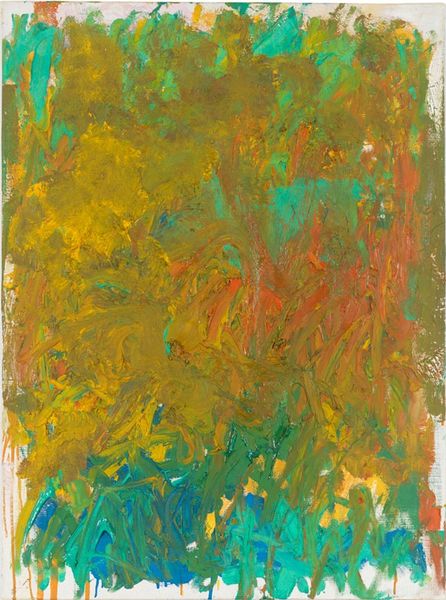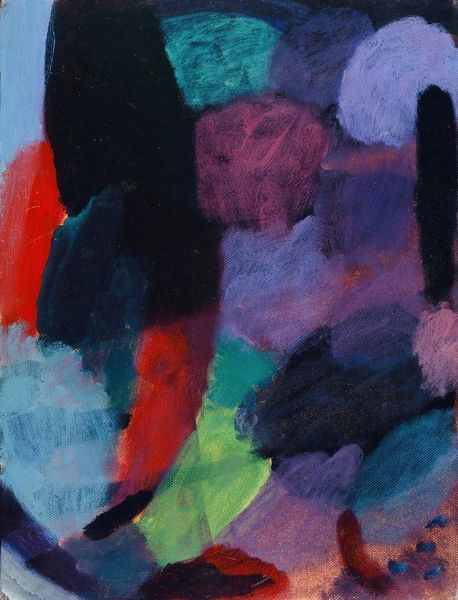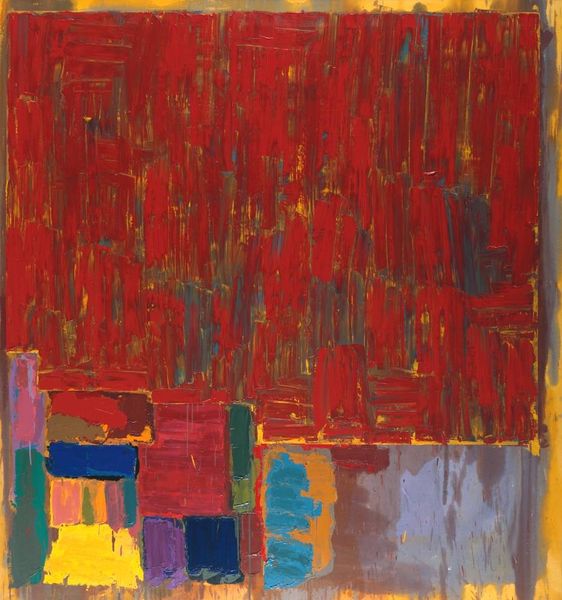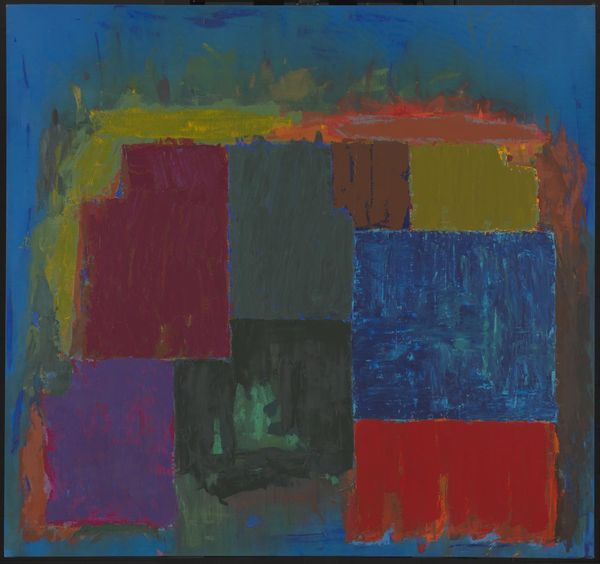
painting, acrylic-paint, impasto
#
abstract-expressionism
#
abstract expressionism
#
painting
#
acrylic-paint
#
form
#
impasto
#
matter-painting
#
abstraction
Dimensions: overall: 96.2 × 111.44 cm (37 7/8 × 43 7/8 in.)
Copyright: National Gallery of Art: CC0 1.0
Curator: Looking at this piece by George Morrison, simply titled "Untitled," created in 1961, the first thing I notice is the thick application of paint. It has a kind of raw energy that demands attention. Editor: Yes, that impasto technique! It gives such a visceral, almost chaotic feel. The color palette feels particularly significant. Was Morrison commenting on the social upheaval of the time? Curator: Morrison was working during the height of Abstract Expressionism. Although “Untitled” is non-representational, consider the tradition of landscape painting; even an abstract landscape can represent particular social contexts. Think, for example, of landscape’s relation to identity and colonization, in Australia for instance. It prompts me to consider the work of his contemporaries. It makes you consider what the image stands for. Editor: I think it might, but for Morrison, a Native American artist working in this style, pure abstraction had real implications. Consider how marginalized voices were excluded from mainstream artistic movements. Refusing figurative representation can itself be a form of resistance against dominant, often stereotypical, narratives. Curator: That's an astute observation. Abstraction as resistance. And yet, within the gestures, I find echoes of forms... natural forms. I almost see fragments of land, a horizon line suggested, like coded symbols waiting to be deciphered. Perhaps they relate to the universal idea of our bond with nature. Editor: That resonates with me. Especially if we place Morrison in conversation with Indigenous thought and traditions that emphasizes interconnection and harmony with nature. Instead of depicting specifics, he’s reaching toward something far deeper, like re-enchantment with nature. Curator: His artistic language seems particularly coded to our modern experience, speaking directly to this new age of cultural tensions. By refusing simple interpretations, the piece prompts a continued reflection. It is not always a literal resistance but instead represents the emotional states of the era. Editor: Indeed, that refusal feels intensely relevant to today’s world of rapid image dissemination and easy answers. There is value in something that refuses to be pinned down so easily. I have truly found value in reconsidering my immediate impressions to this abstract form of resistance and enchantment. Curator: As do I; I think that exploring those complex tensions that were at work gives it a lot more appeal in understanding.
Comments
No comments
Be the first to comment and join the conversation on the ultimate creative platform.
